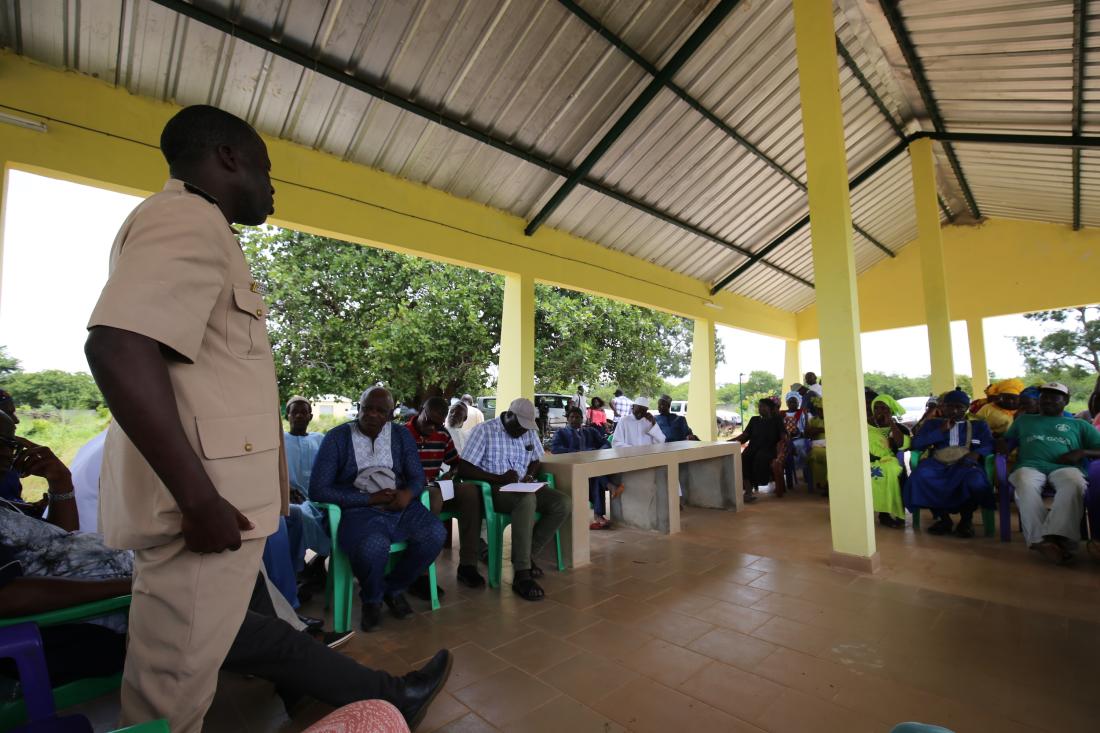Reducing Corruption Among Local Politicians in Benin
- Politicians and electoral candidates
- Transparency and accountability
- Corruption and Leakages
- Community monitoring
Many governments have devolved some political and economic authority to local entities, hoping to achieve more accountable and effective governance at the local level. Yet political corruption often hinders effective delivery of local services like water, sanitation, or primary education. Increasing monitoring of elected officials’ actions and reporting on those actions to a wider audience of citizens is one possible way to decrease incidences of corruption among local officials. Researchers are investigating the impact of monitoring meetings of local officials by civil servants and regular reporting to a wider group of stakeholders, like civil society leaders and village delegates, on corruption among local elected officials.
Policy issue
Political corruption can curtail both delivery and quality of key municipal services like health and education. To foster more transparent, accountable, and effective governance, many countries have devolved some political and economic power from a national government to locally elected officials and administrators. Yet in many African countries this decentralization has not lead to a reduction in large-scale political corruption by local elected officials.
One way to reduce corruption and increase transparency is by monitoring the actions of elected officials. Two common approaches to monitoring are top-down, led by the central government, and bottom-up, led by citizens. Yet in some cases the central government may have limited auditing capacity or citizens may lack ways to engage with local government, rendering top-down or bottom-up monitoring infeasible. In these cases, an alternative approach leverages actors inside the local government to monitor elected officials’ actions, known as bureaucratic monitoring. Is bureaucratic monitoring an effective tool for reducing leakage, corrupt practices, and misallocation of funds in a context where other methods of monitoring are not feasible?
Context of the evaluation
Benin has 77 independent municipalities governed by an elected legislative body, the Municipal Council, and an elected executive, the Mayor. The Municipal Council oversees the Mayor’s decisions and can impeach the Mayor. Councils use their power to impeach somewhat frequently: 10 percent of mayors have been impeached on corruption charges brought by the Municipal Council. The Municipal Council’s check on the Mayor’s power is effective only when there is limited corruption between the Mayor and Municipal Council.
Each municipality also has a General-Secretary, which is appointed by the central government to head the municipal administration. The General-Secretary convenes all meetings of the Municipal Council, executes the Mayor’s plans, develops annual municipal plans and budgets, and monitors meetings between the Mayor and Municipal Council.
There are limited prospects for bottom-up or top-down monitoring of municipalities in Benin. Mayoral elections take place every four years, and there is no mechanism for citizens to hold mayors accountable for delivering on their campaign promises or governing effectively in years between elections. The central government has considerable fiscal power over municipalities, but it does not have institutional mechanisms to consistently audit and identify corruption at the local level.

Details of the intervention
Researchers are investigating the impacts of monitoring the behavior of elected local officials by actors within local government. They partnered with the Ministry of Decentralization to introduce a quarterly meeting in municipalities for a broad audience of Municipal Administration staff, civil society leaders, and representatives from villages in the municipality. The General-Secretary chairs the meetings and reports on the municipalities’ finances and management by the Mayor and Municipal Council. The audience is invited to engage in dialogue about the General-Secretary’s findings.
Researchers randomly assigned 20 municipalities to implement the quarterly meeting intervention. The municipalities are from all 12 administrative departments in Benin. An additional 20 municipalities serve as a comparision group. To the greatest extent possible, treatment and comparison municipalities are not contiguous.
Results and policy lessons
Evaluation is ongoing; results forthcoming.

